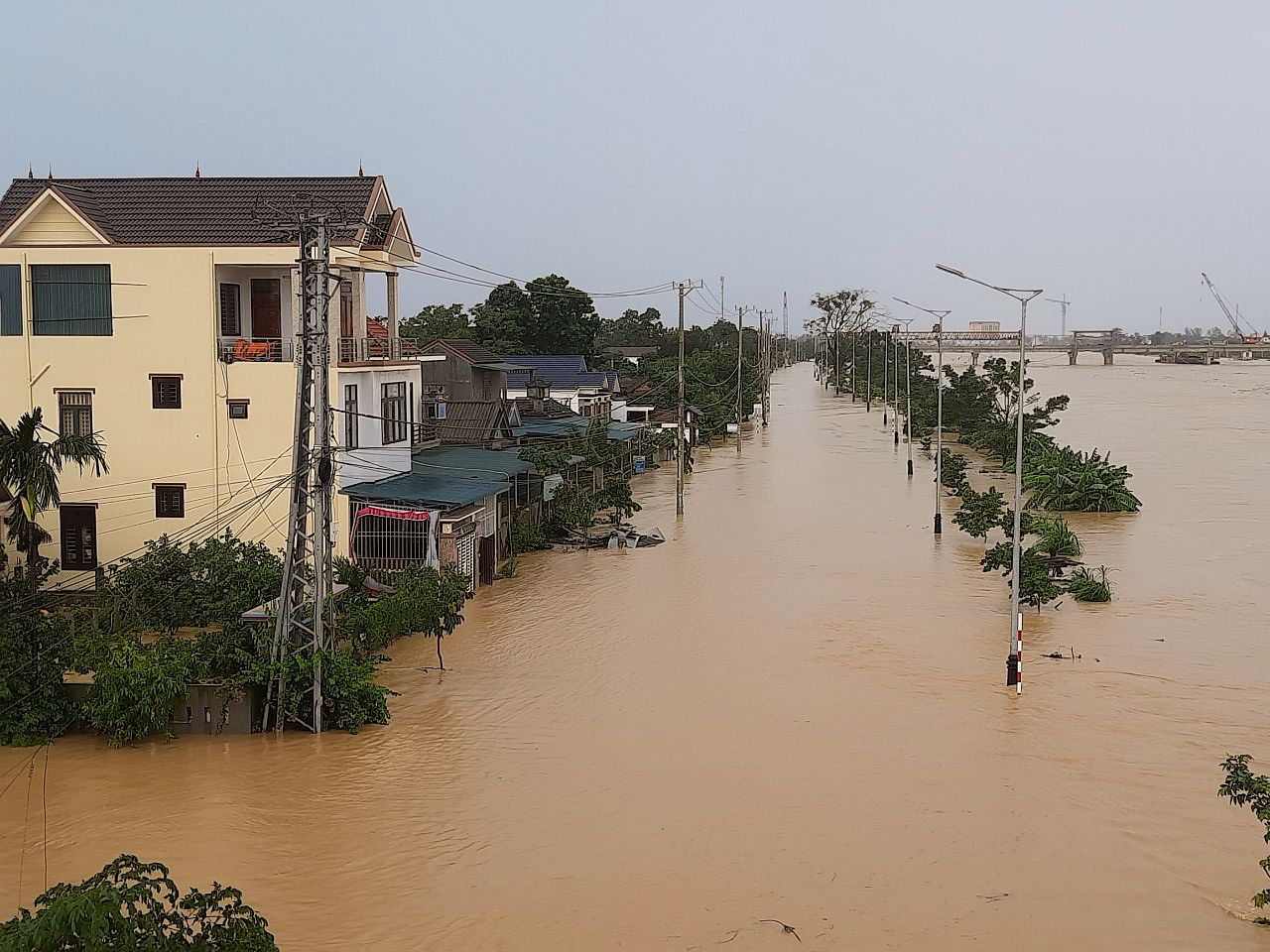After nearly a week of constant downpour, many provinces of Vietnam’s Central Highlands and South-Central Coast regions have suffered severe flooding and landslides, causing catastrophic damage to local infrastructure, economic activities, and deaths. This has been yet another month of loss and destruction for Vietnam in 2025, which is shaping up to be the most devastating year in recent history due to consecutive powerful typhoons and atypically high rainfall.
The Vietnam Meteorological and Hydrological Administration recently published a report on the dire flooding disaster last week in the South-Central Coast Region, VnExpress reports, noting that the water levels witnessed have never been recorded in 50 years of tracking.
According to the report, from November 15 to 19, many rainfall readings measured at local stations exceeded historic numbers, such as 380mm in Quy Nhơn, 601mm in Sơn Hòa (Đắk Lắk). In Đắk Lắk, some localities recorded over 1,000mm, such as Sông Hinh (1,861mm) and Sơn Long (1,363mm).

Nha Trang authorities gather damaged boats on the street in preparation for repairs. Photo by Thanh Tùng via VnExpress.
These unprecedented amounts of precipitation were minimally absorbed by the land, which was mostly saturated after extensive bouts of rain from October to November. During these months of 2025, the recorded rainfall on average was 120%–200% more than in other years.
As of November 23, the widespread flooding has claimed 90 lives so far across six localities, the majority of whom were in Đắk Lắk. Khánh Hòa, Lâm Đồng, Gia Lai, Huế, Đà Nẵng and Quảng Trị have also reported fatalities, while 12 others remain missing.
Extended heavy rain and inundation have destroyed 1,154 and submerged over 185,700 houses in the region, while over 80,800 hectares of crop farms were affected. Additionally, 3.2 million farm animals died, and 1.157 hectares of aquaculture farms were wiped out. Most prominently, the flooding has completely obliterated Đắk Lắk’s lobster industry with damages amounting to VND2 trillion.

Ánh, a lobster farmer in Phú Yên (now Đắk Lắk), surveying the damage to his rafts. Photo by Đình Sang via Đại Đoàn Kết.
While the water has receded in some provinces like Gia Lai, most of Đắk Lắk’s neighborhoods are still underwater and relief efforts are still hindered as major connective highways were severely damaged by landslides. Many passes that connect Lâm Đồng with adjacent provinces were disrupted by fallen rocks.
The rainiest rainy season
The Central Highlands and South-Central Coast are the most recent victims battered by the series of calamities battering Vietnam in 2025. Just last month in October, Central Vietnam also received historic levels of rainfall due to the remaining effects of Storm No. 12 (Fengshen), causing widespread flooding in Huế, Đà Nẵng, Hội An, Quảng Trị and Quảng Ngãi. Huế, for example, experienced 23 days of stormy weather that only stopped on November 7.

The Imperial City in Huế was overwhelmed by floodwater on October 28. Photo via Tiền Phong.
In early October, Storm No. 11 (Matmo) crossed the East Sea into northern Vietnam, showering mountainous and Red River Delta provinces with heavy rain, including Thái Nguyên, Bắc Ninh, Hanoi, and Lạng Sơn. Thái Nguyên was the worst hit, receiving the highest readings of rainfall in 61 years and thus suffering from major floods.
In late September, Storm No. 10 (Bualoi) made landfall in North-Central Vietnam, wreaking havoc on Ninh Bình, Thanh Hóa, Lào Cai, Hà Tĩnh, Nghệ An and Quảng Trị. As of October 1, the disaster had killed 51 people and caused VND12.8 trillion in damages.
How to help
At the moment, relief efforts are focusing on assisting the victims of the most recent floods in the Central Highlands and South-Central Coast. If you live in Hồ Chí Minh City, there are many designated drop-off points for physical contributions, including all 14 stations of Metro Line 1. A list of places accepting care packages is available on the official Facebook account of the Vietnamese government (Thông Tin Chính Phủ) here. Volunteers are also needed to help sort and pack donated items.

Saigoneers drop off donations outside of Bến Thành Station. Photo via Tiền Phong.
According to Tuổi Trẻ, most urgently needed products include household appliances, such as rice cookers and fridges; food items like cooking oil, condiments, rice; jackets and other winterwear; bedsheets, blankets, and other linens; medicine, insect repellent, disinfectants; school supplies for children; etc.
In terms of monetary contributions, the Vietnam Fatherland Front (Mặt Trận Tổ Quốc Việt Nam) is the official government organization handling donations, including US dollar channels. A list of official VFF bank accounts is available here. Vietnamese citizens can also make donations via the VNeID application. The VFF Facebook account is providing daily statements of transactions to their official accounts here.
Top photo: Volunteers help put together care packages at a dropoff point run by the Vietnam Fatherland Front. Photo by Chí Nguyên/Người Lao Động.















